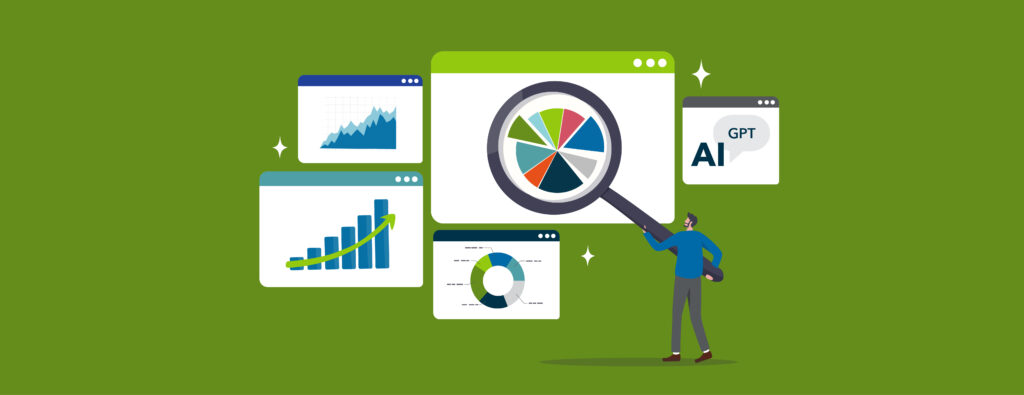
5 Ways Higher Ed Marketing Is Evolving in 2025 & Beyond
Higher ed marketing is changing faster than ever.
From generative AI to shifting student expectations, higher ed marketing in 2025 is a whole new game. And institutions that fail to adapt risk falling behind.
The past few years have brought seismic shifts to the way colleges and universities connect with prospective students. From AI-driven search to heightened public scrutiny of higher education’s value, the marketing landscape looks very different than it did even three years ago.
Institutions now operate in an environment where:
- Search behavior is changing as generative AI delivers instant answers that bypass traditional search results.
- Trust is under pressure as students and families weigh the true return on a college investment.
- Student journeys are more complex with expectations for personalized, multi-channel engagement from first inquiry through alumni relations.
- Data integrity is paramount as analytics get clouded by bots and misleading signals.
The good news? These changes also open new opportunities for colleges and universities to stand out with authentic storytelling, data-driven strategies, and student-centered engagement.
Keep reading to discover five of the most important higher education marketing trends in today’s landscape — and how institutions can adapt to thrive in this new era.
5 Higher education marketing strategies to keep your institution ahead
Before diving into the specifics, it’s important to recognize that these strategies build on one another to reflect today’s most pressing challenges and opportunities in higher ed marketing.
Here’s a closer look at the strategies every institution should be considering today:
1. Optimizing for the AI searcher
Generative AI is redefining how prospective students find information. Zero-click searches — where answers appear directly in AI Overviews like Google’s AI-generated summaries or conversational search tools — now account for the majority of queries. That’s a paradigm shift for higher ed marketing.
Organic traffic has dropped dramatically, in some cases by more than 30%. But while volume is down, conversion rates are rising, as the students who do land on institutional websites are more informed and further along in their decision-making.
Strategic response
To adapt, institutions must embrace Answer Engine Optimization (AEO) and Generative Engine Optimization (GEO). This means:
- Creating structured, conversational content designed for AI retrieval.
- Prioritizing FAQs, clear definitions, and outcome-driven data.
- Diversifying traffic sources with a mix of SEO, paid campaigns, and strong digital experiences.
This is no longer just an SEO shift. It’s a cornerstone of higher education marketing strategy for 2025 and beyond.
2. AI-supported, human-centered creative
AI is now embedded in higher ed marketing workflows, helping generate campaign ideas, personalize messaging, and predict outcomes. But the real competitive edge comes when AI enhances, not replaces, human creativity.
Approach for higher education marketing teams
- Use AI to accelerate production: ideation, headlines, personalization cues.
- Keep teams focused on authentic, human-driven storytelling.
- Build a culture that values both technological fluency and creative intuition.
This approach delivers efficiency while preserving empathy — critical when communicating complex outcomes like institutional ROI or program value. This balance is what separates innovative higher education marketing trends from short-lived tactics.
3. Building institutional trust
Public skepticism about the value of higher education is rising. Families are asking: Is the investment worth it? What outcomes can we expect? With the demographic cliff looming, institutions must double down on proving their value.
Strategic levers for higher ed marketing
- Spotlight outcomes: Share data on job placement, graduate earnings, and alumni success stories.
- Showcase testimonials: Humanize ROI with student voices and career impact narratives.
- Reinforce program value: Use research and rankings to strengthen credibility.
Trust is now a competitive differentiator. Institutions that clearly communicate value, ROI, and outcomes position themselves for long-term success in a skeptical environment.
4. Cross-lifecycle marketing
Higher education marketing strategy can no longer stop at the inquiry. The student journey is long, nonlinear, and filled with digital touchpoints that extend well past enrollment.
How to approach it
- Use remarketing to reinforce brand and program value throughout the funnel.
- Engage students across the lifecycle — from inquiry to enrollment to retention and even alumni relations.
- Tailor content to each stage, aligning messages to nurture confidence, reduce uncertainty, and strengthen connection.
Success isn’t always about clicks or form fills. Sometimes the goal is reassurance, engagement, or retention. Adopting lifecycle-based KPIs ensures institutions are measuring what truly matters.
5. Bot mitigation
Bot traffic is a growing challenge for institutions. Automated hits can inflate website visits, distort engagement metrics, and ultimately mislead decision-makers about which campaigns are working. When analytics are clouded by non-human activity, institutions risk allocating resources to the wrong strategies and missing opportunities to connect with real prospective students.
Best practices for higher ed marketing teams
- Set up filters in Google Analytics to remove known bot traffic.
- Partner with bot mitigation providers to extend protections to include inquiry and application forms, safeguarding against fraudulent submissions.
- Regularly audit campaign data to ensure accuracy.
Clean data leads to better decisions and in higher education marketing, clarity is non-negotiable.
Embracing the future of higher ed marketing
The most effective higher education marketing strategies today are those that combine technology with authenticity. AI search and personalization will continue to evolve, but the fundamentals remain constant: institutions must build trust, deliver value, and guide students throughout their entire lifecycle.
Collegis Education partners with institutions to design and deliver data-enabled marketing strategies that drive enrollment, build trust, and support student success. Let’s talk about what that could look like for your campus.
Innovation Starts Here
Higher ed is evolving — don’t get left behind. Explore how Collegis can help your institution thrive.
